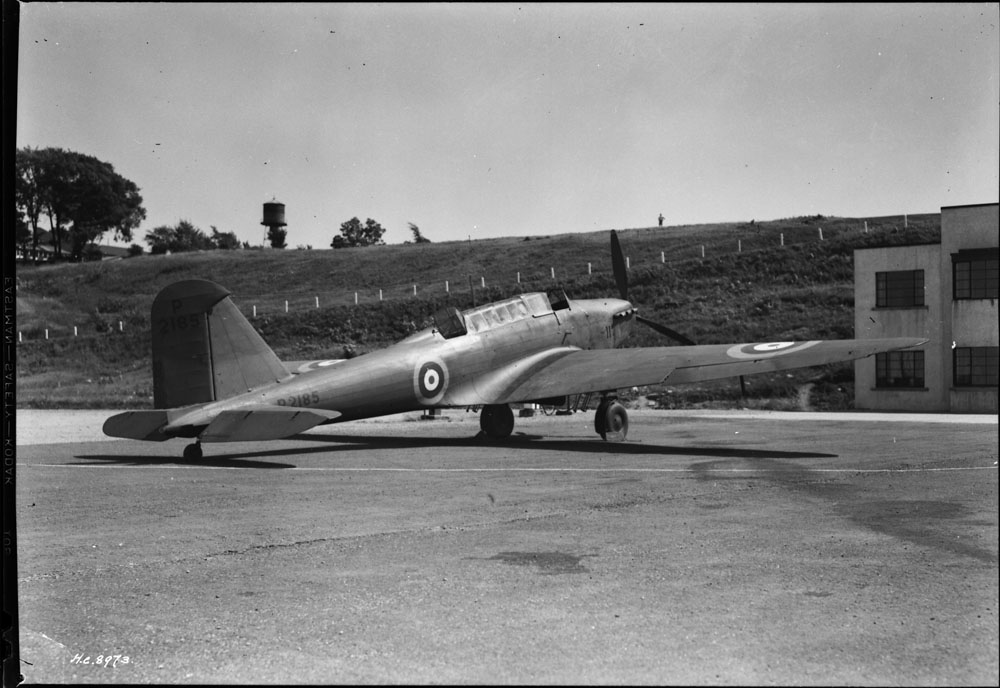
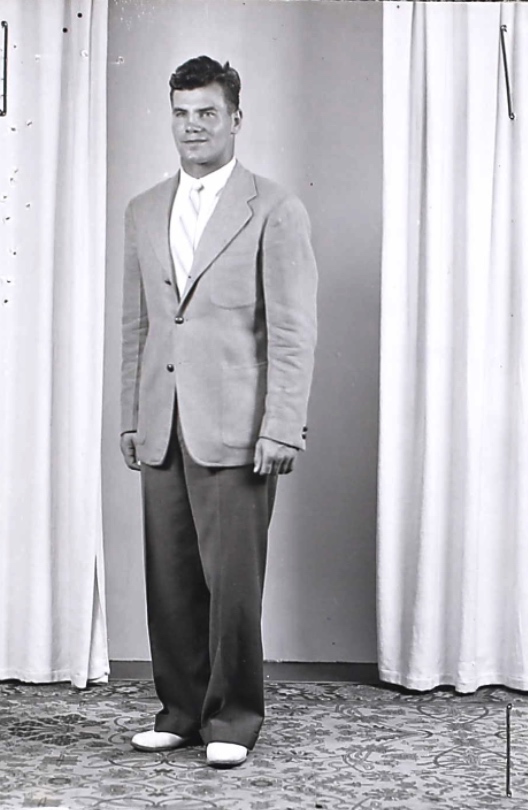

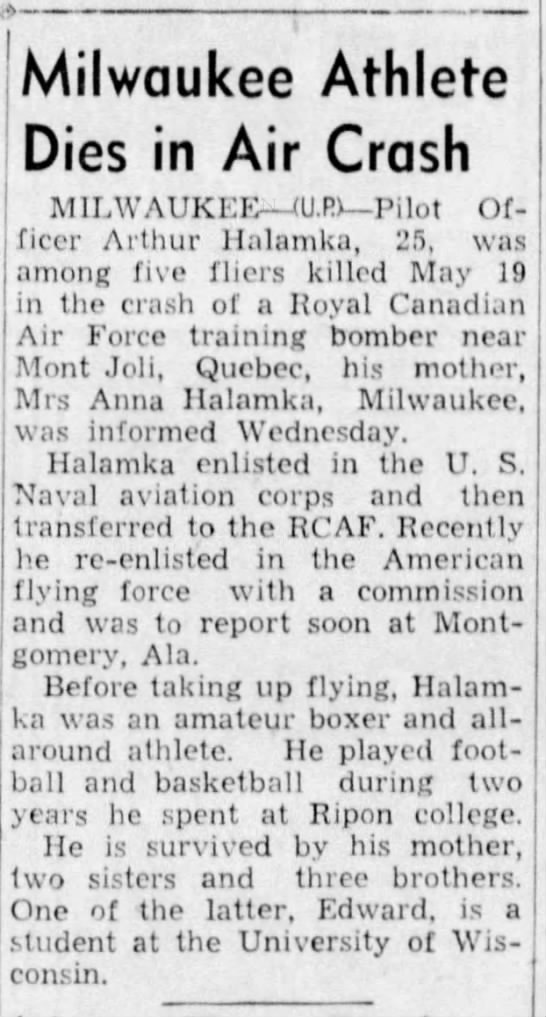
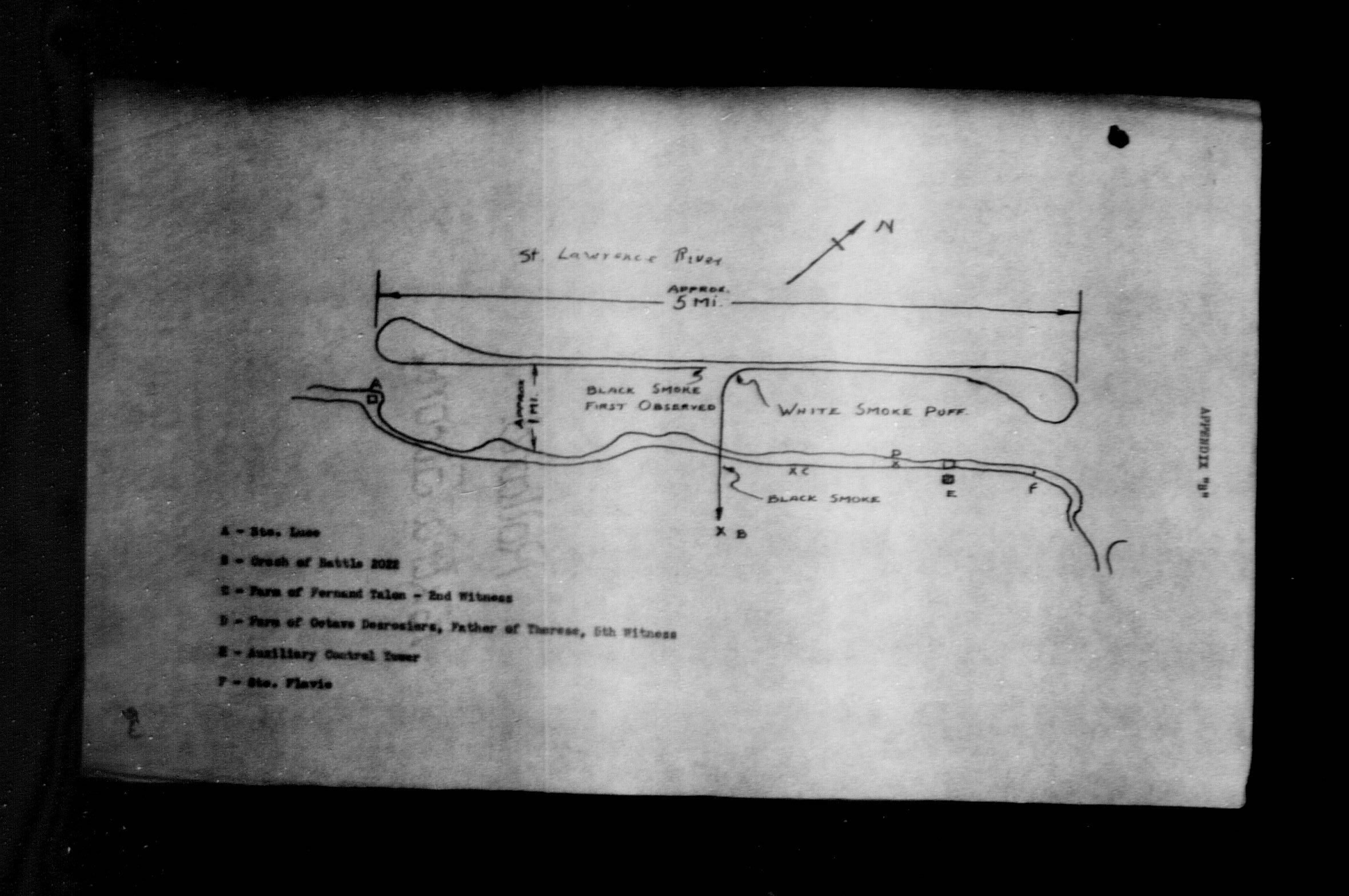
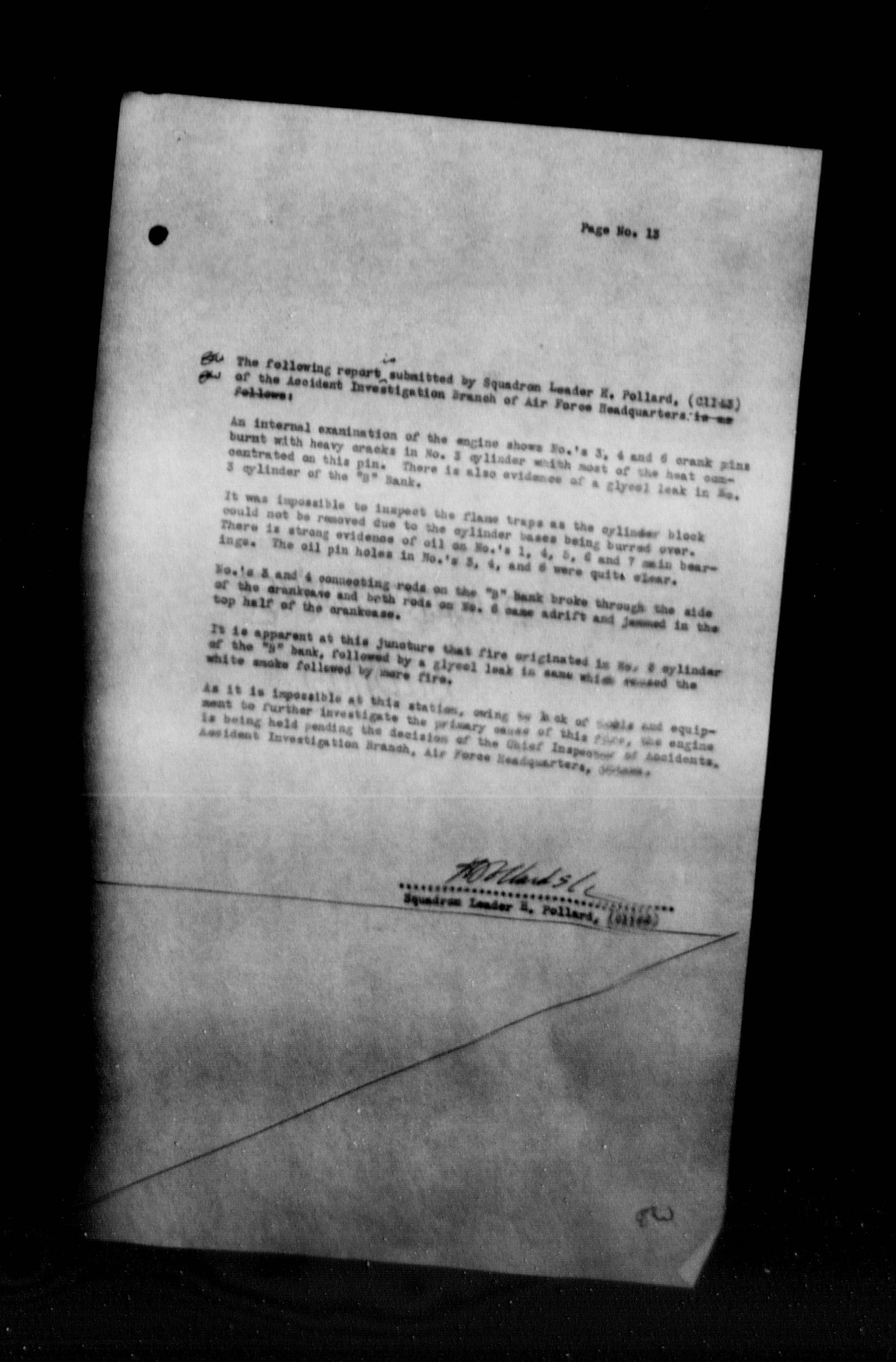
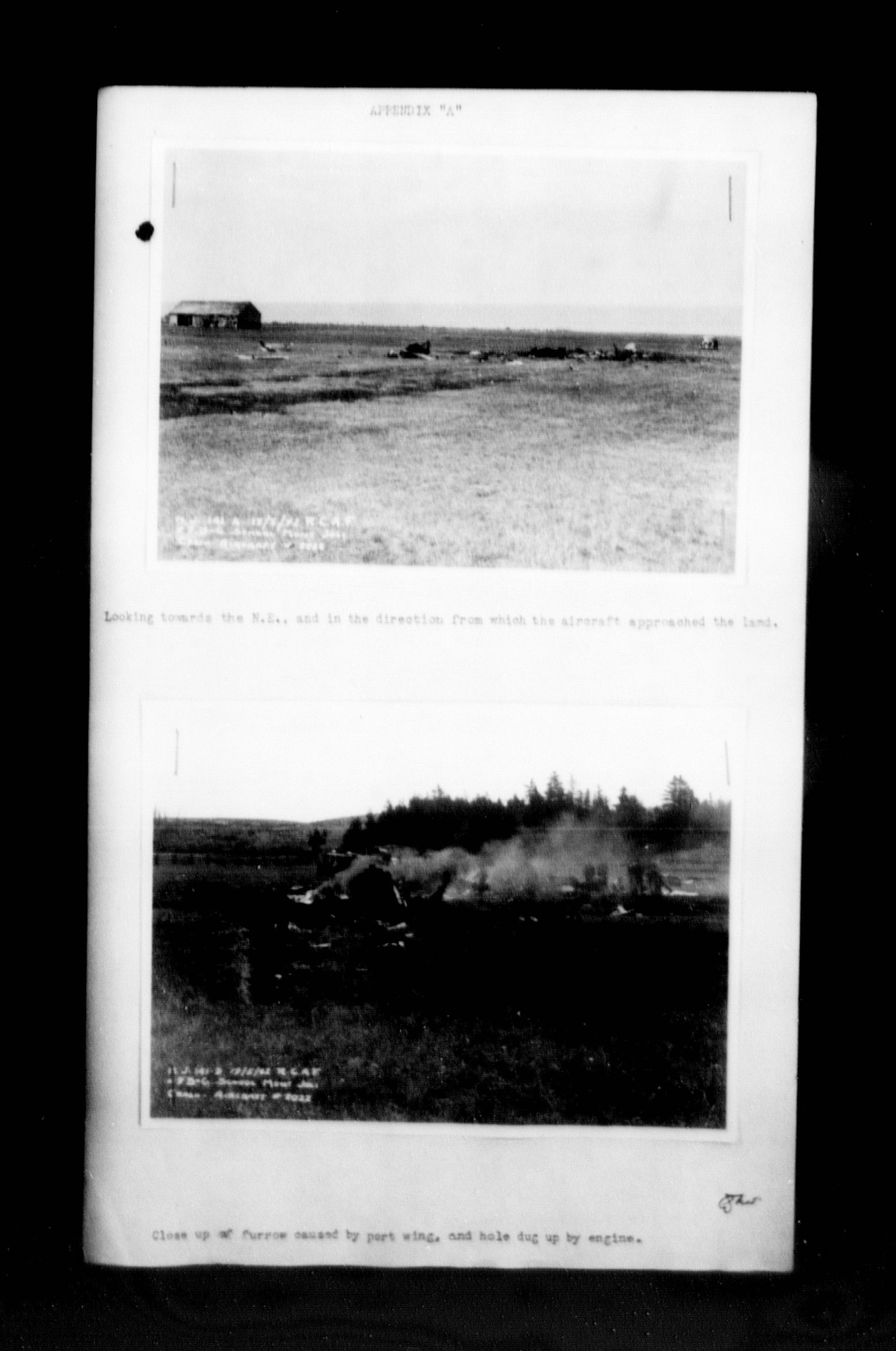
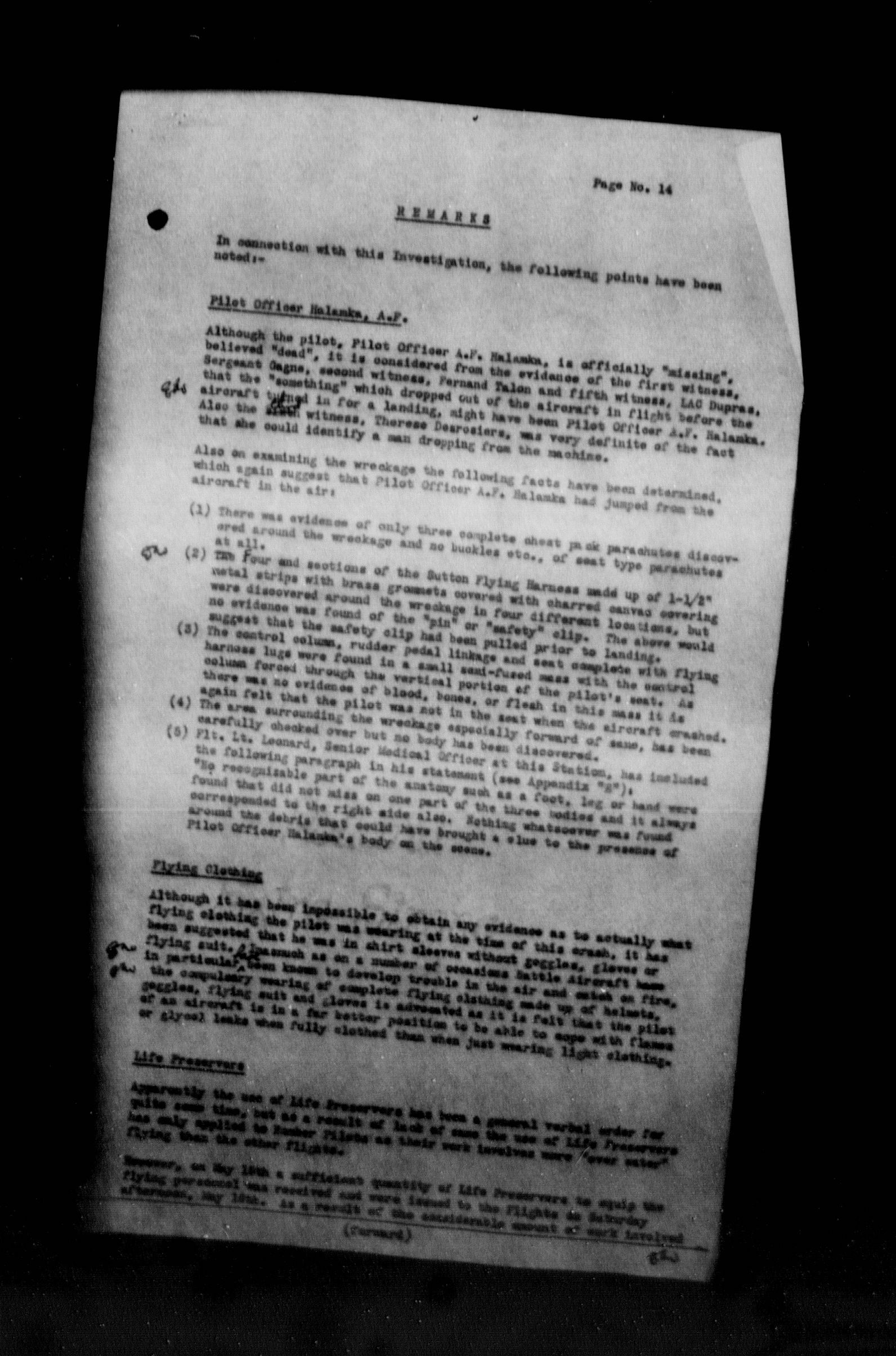
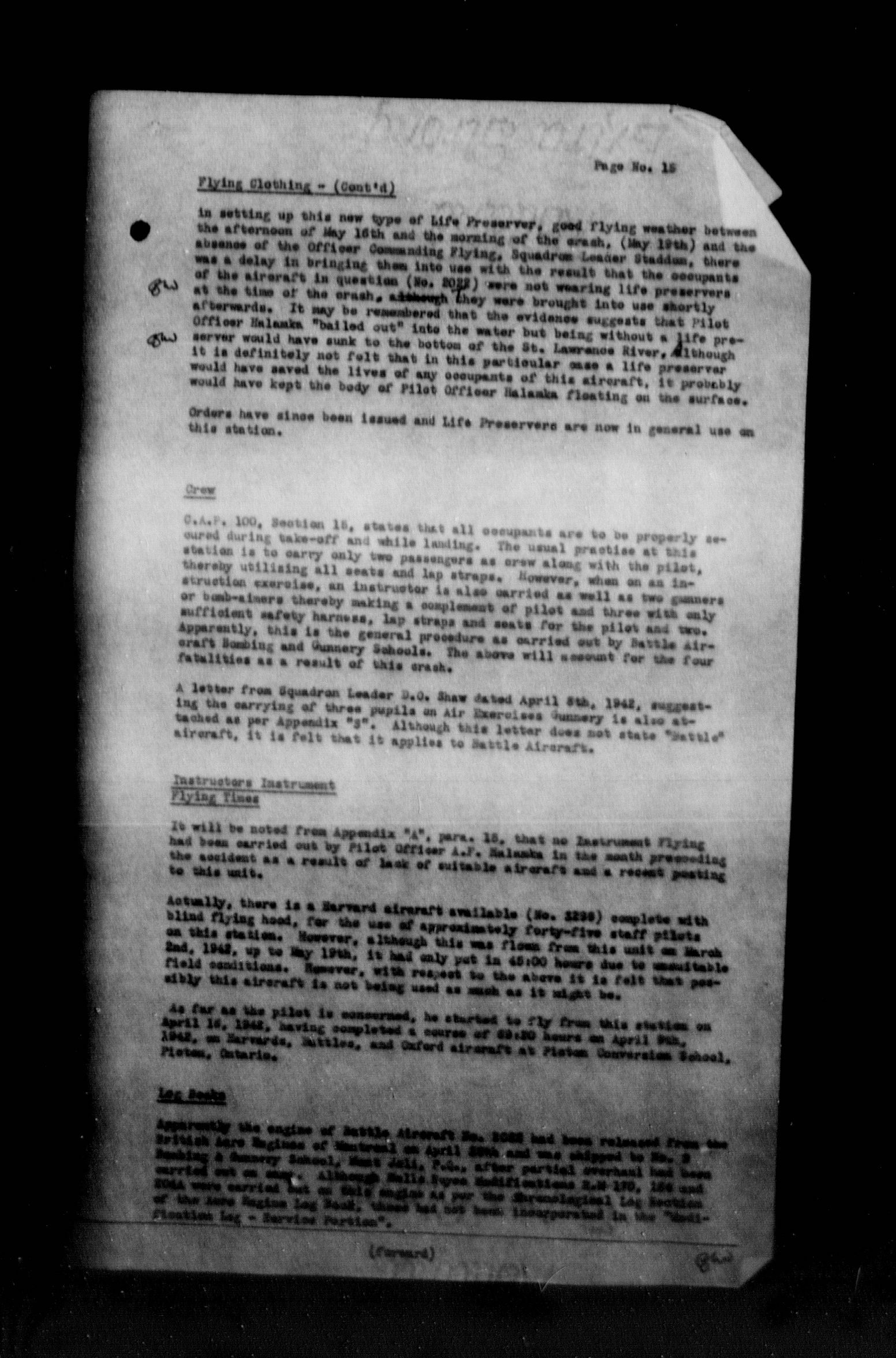
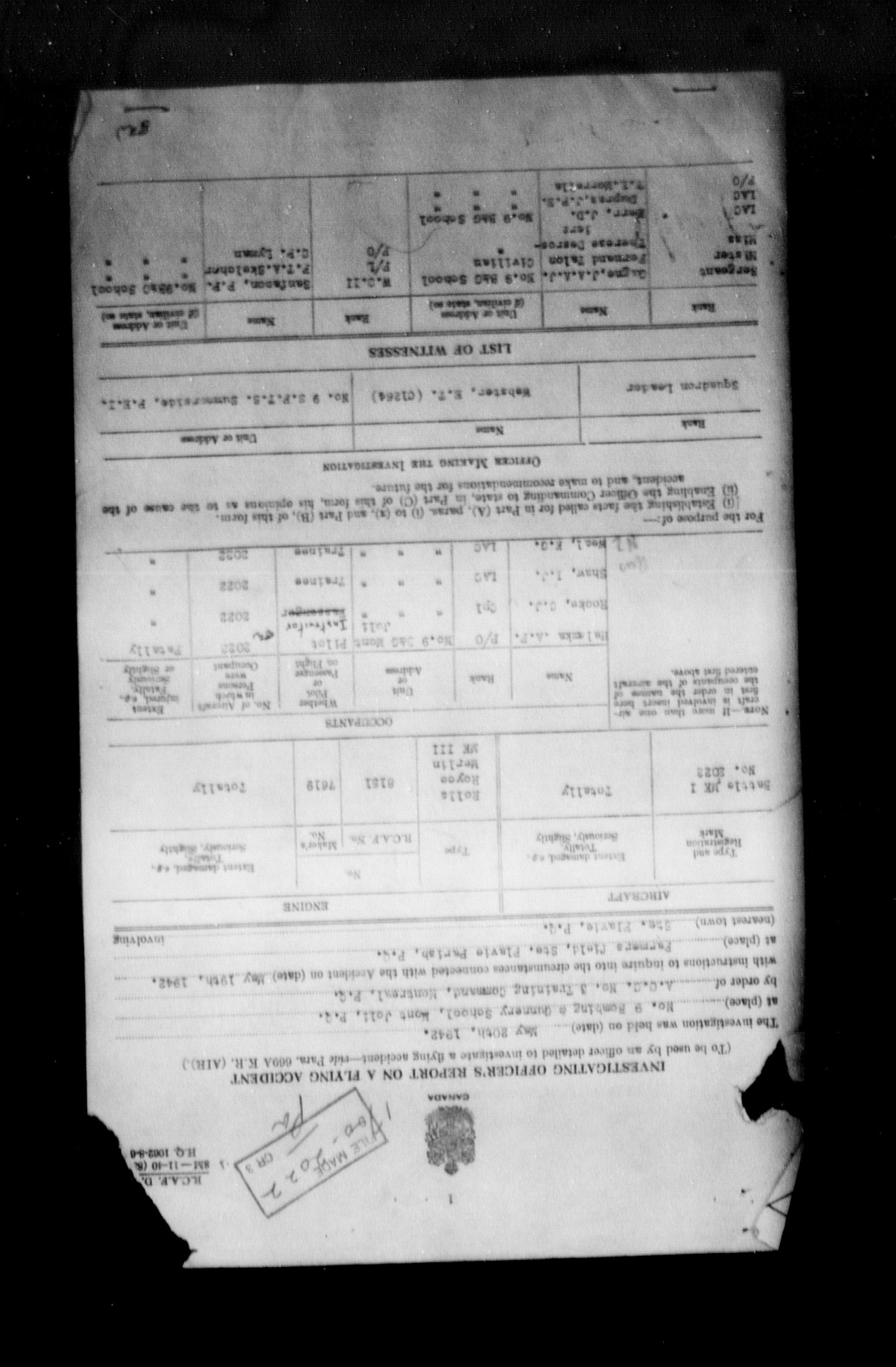
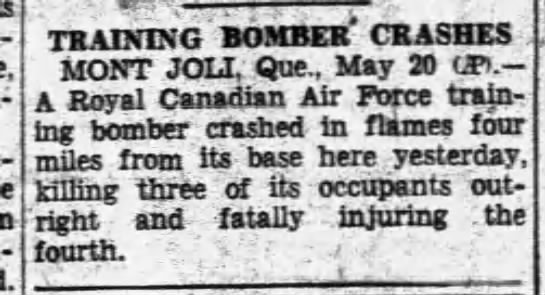
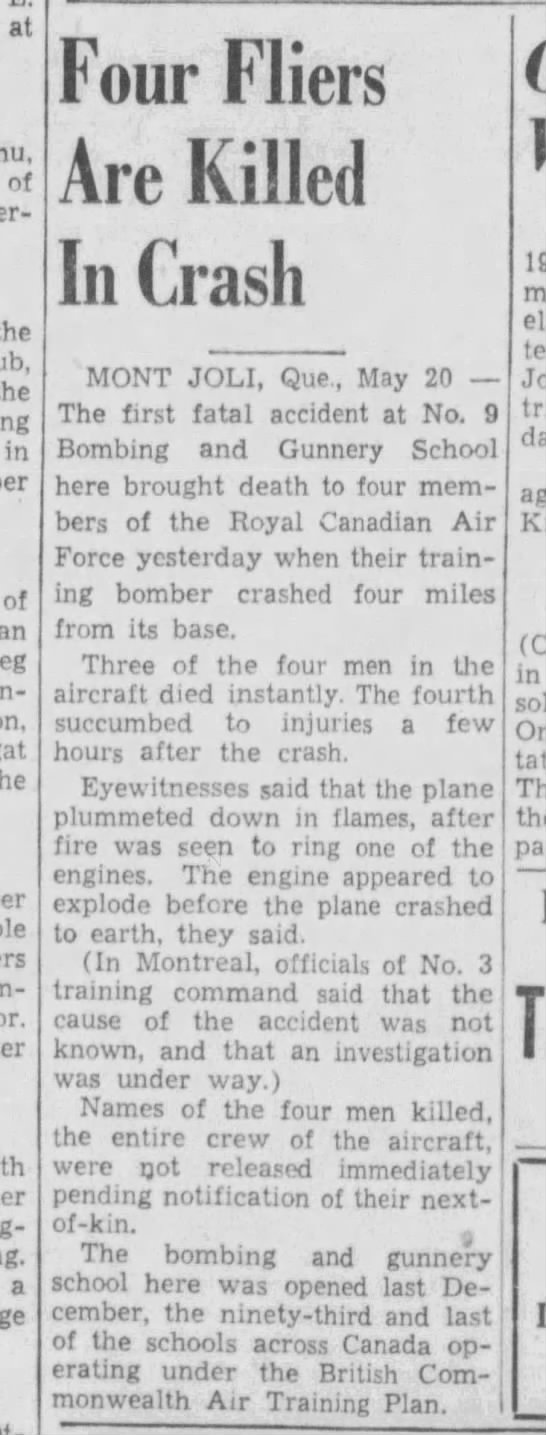
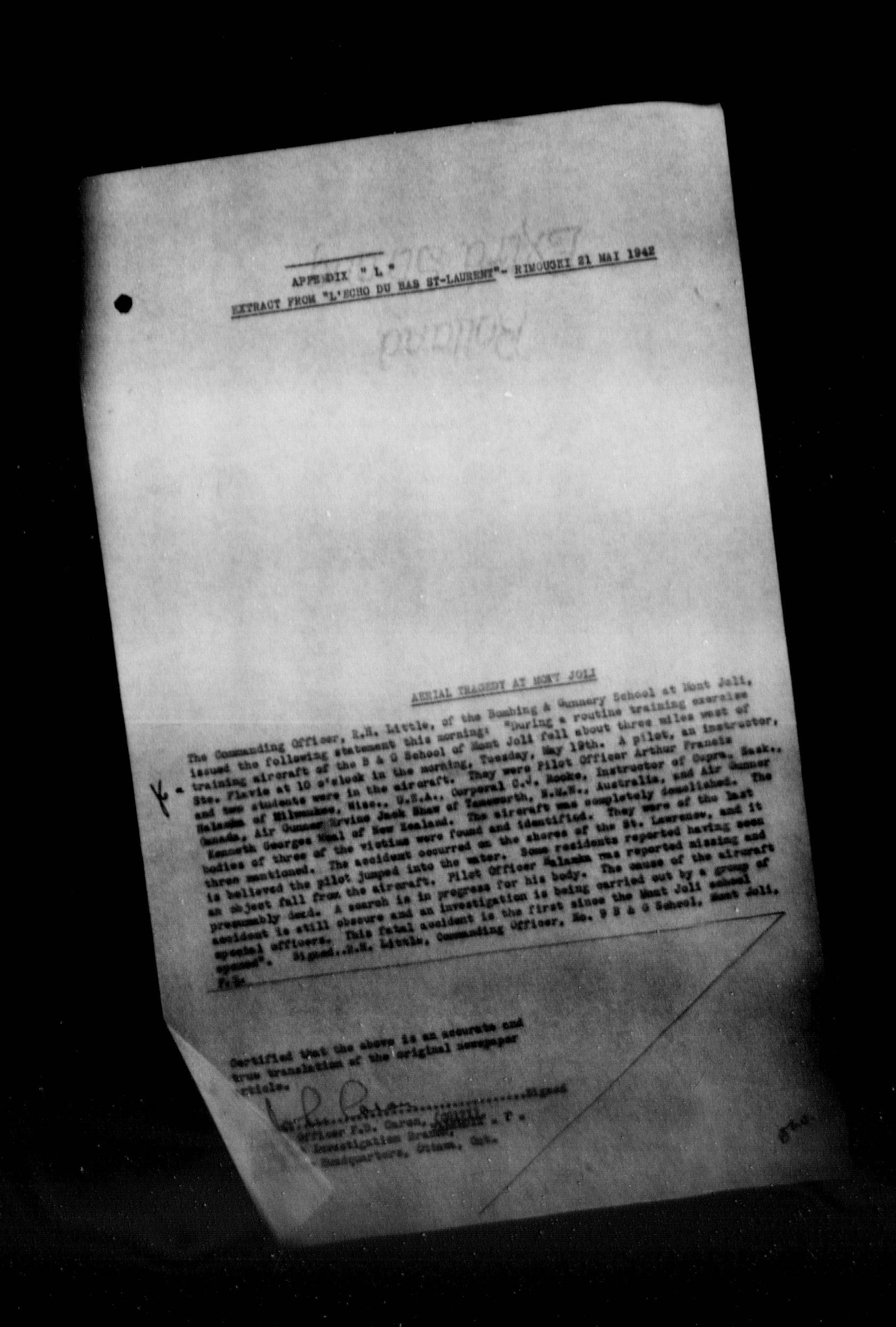
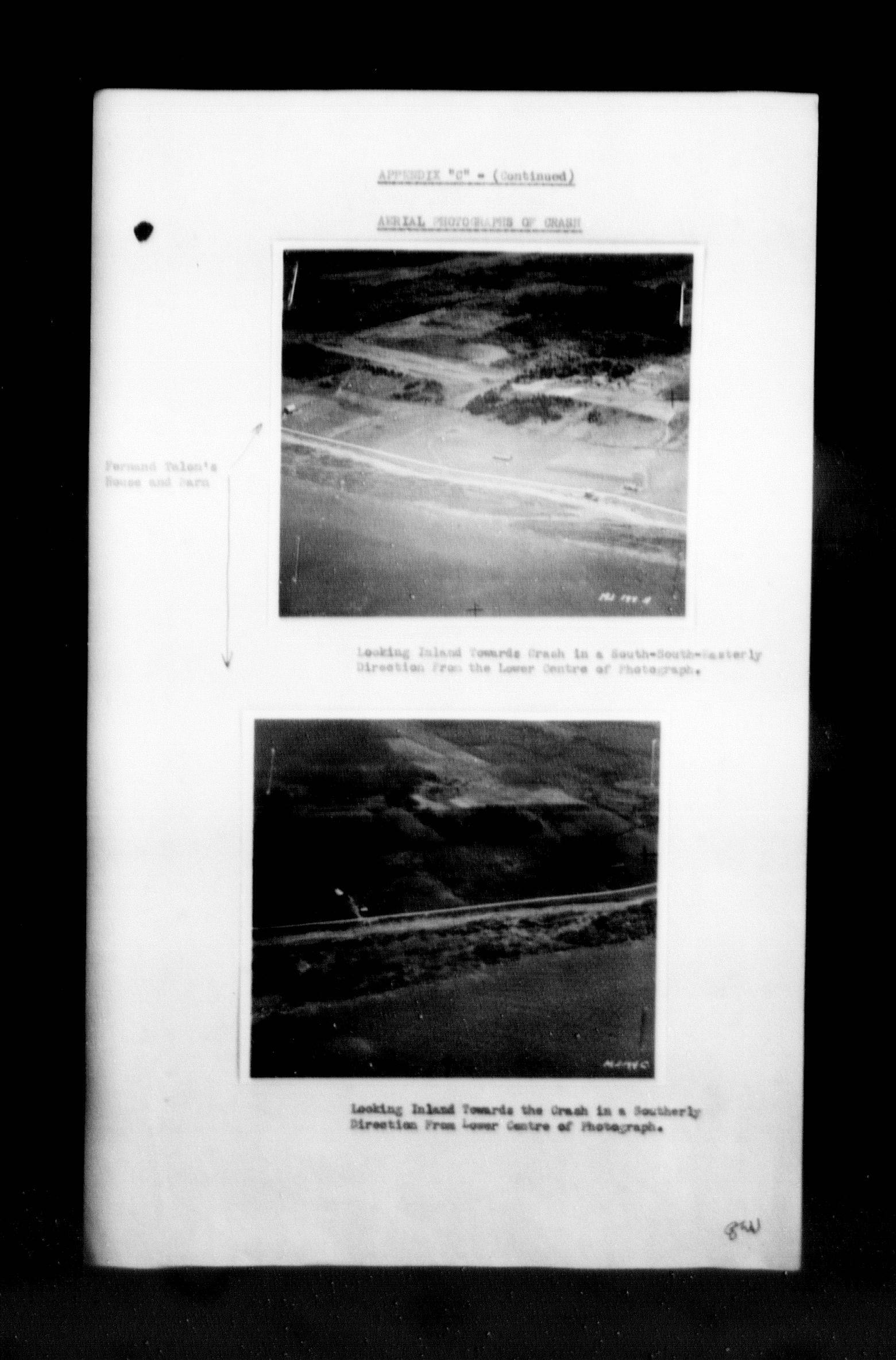
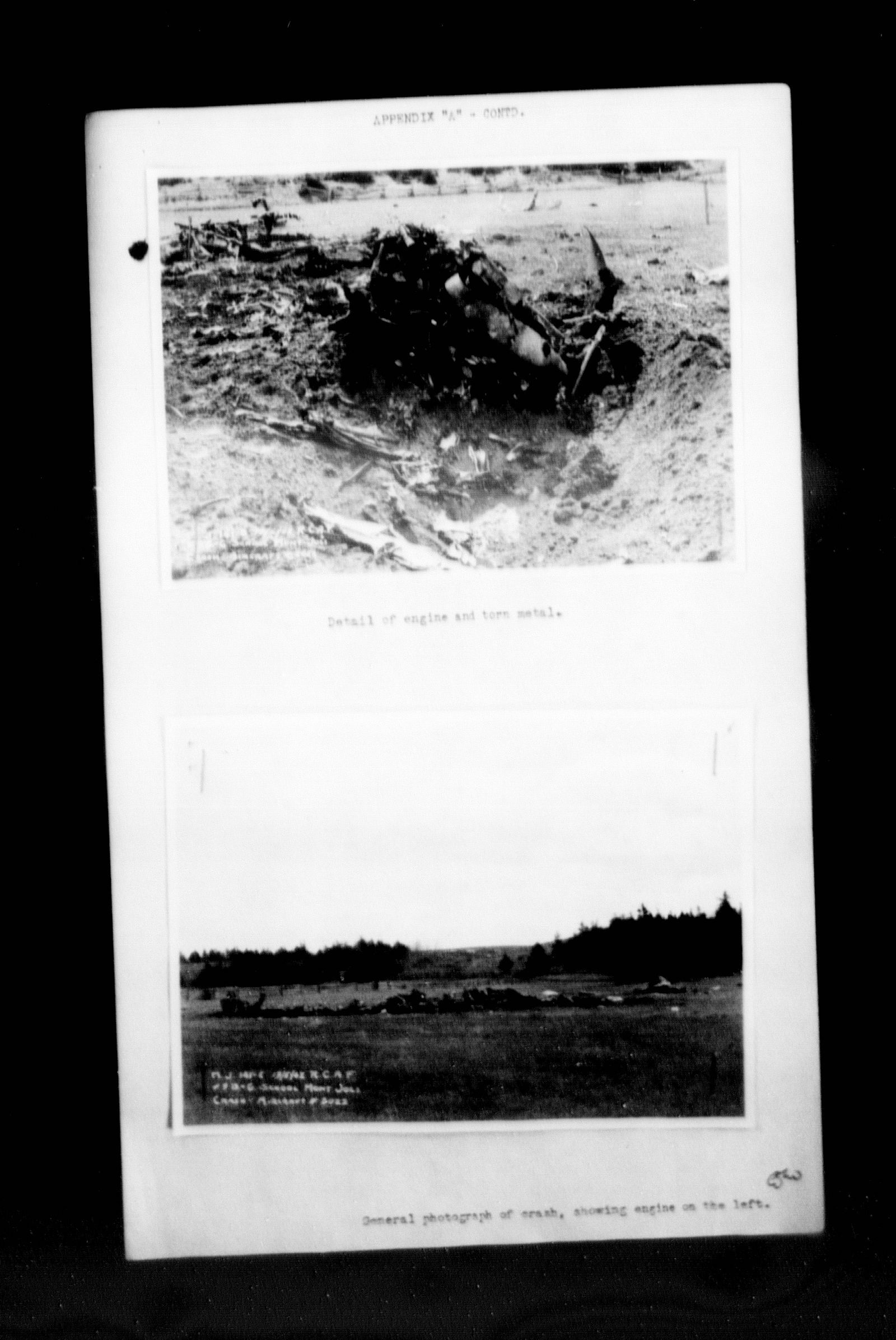
October 21, 1916 - May 19, 1942















Arthur Francis Halamka was born in Milwaukee, Wisconsin, USA to Frank Halamka (1868-1932) and Anna (nee Walter) Halamka (1881-1974). He had three brothers, Edward, Charles, and Jerome, with the US Army at the Florence Interment Camp (Arizona) during the war, and two sisters, Mrs. James Chott and Mrs. Alex Orlowski. The rest of the family lived in Wisconsin. The family was Roman Catholic.
Arthur stood 5’ 8 ½” tall, weighing 163 pounds, fracturing his nose in 1934. He had brown eyes and brown hair. A ½” scar was noted on his left eyebrow. He attended Ripon College studying mechanical engineering, 1938-1940, and was in ROTC for 2 ½ years. He worked at Wesley Steel Treating (1935-38) as a steel treater, then Stoker Unit Corp, 1938 as a machine hand, then for Harley Davidson Motorcycles in 1940, assembling motors. He liked football, baseball, and basketball. He indicated he did not smoke; he drank two pints of beer per week. He liked to build aeroplanes. “Was boxing coach at college. Was also on the rifle team in the ROTC.”
He had been in the Navy (aviation) Cadets in 1940-41, stationed in Chicago, Illinois, then Texas, then Pensacola, Florida, where he was discharged. He had 351 hours flying time and held a private pilot’s license. A test dated August 20, 1941: “Time in air: 35 minutes. 94%. WACO UPF 7, License No. 29988. Student shows plenty of experience with heavy aircraft; co-ordination very good. Aptitude way above average. A very high type of man.” Total Flying hours: 348.
He transferred to the RCAF in Ottawa, Ontario on September 15, 1941. He resided at the Chateau Laurier, Room 542, while he waited to be called up. “Somewhat below average. Courteous, appears straightforward and fairly intelligent. Definitely foreign extraction and shows in speech. Pleasant. Fair appearance. Short, stocky type. Business or occupation since school not impressive. General impression only fair. Value to RCAF would be only flying time. Probably fair material for Staff Pilot. Very borderline officer calibre. Best fitted for Staff Pilot when he has received up to 25 additional hours at Picton on service aircraft.”
Arthur was at CTS Picton then at Rockcliffe, Ontario, by November 26, 1941.
On January 24, 1942, Arthur was reprimanded at Rockcliffe. “Conduct to the prejudice of good order and air force discipline: interfering with another aircraft while in flight. Neglecting to obey station standing orders, formation flying without prior arrangement.” Arthur was under open arrest during the hearing and taking of summary only.
He was posted to No. 9 B&G School, St. Joli, Quebec April 15, 1942, as a staff pilot. According to a newspaper article, Arthur had re-enlisted with the American Air Force and was to report at Montgomery, Alabama before his crash in Fairey Battle 2022 on May 19, 1942. While on a training flight aboard Fairey Battle 2022, the plane crashed in a farmer’s field Sainte-Luce/Sainte-Flavie, Quebec, near the St. Lawrence River, in flames.
Crew of Fairey Battle 2022: PILOT P/O Arthur Francis Halamka, C7558, RCAF, INSTRUCTOR Corporal Clarence James Rooke, R120501, RCAF, TRAINEE LAC Irwin Jack Shaw, 413494, RAAF, and TRAINEE LAC Kenneth George Weal, 413287, RNZAF.
Court of Inquiry can be found on microfiche T-12342, image 3745. Nine witnesses were called, and a sketch of the bombing range was provided.
The first witness, Sgt. J.A.A.J. Gagne, 7591, employed for a month as Safety Officer, Auxiliary Control Tower on the Gunnery Range of No. 9 B&G School, Mont Joli, Quebec stated: “on the morning of May 19th 1942, I was stationed on the top floor of the auxiliary control tower watching the drogue and gunnery aircraft practicing on the range. At approximately 1000 hours, the gunnery aircraft on the range at that time was proceeding on a line parallel to the shore in southwesterly direction and was starting to give out an amount of black smoke. Keeping my eyes on this aircraft, I watched it carry on to approximately 2 miles from the town of St. Luce where it made 180 degree turn an flew back parallel to the shoreline until it had passed my position in the tower, When it again made a 180 degree turn and flew back once more. At about 1/2 a mile towards St. Luce, I noticed flames and then immediately afterwards a puff of white smoke coming from the tail of this aircraft which then made an approximate 90 degree turn around the left towards the fields. As a result of a feeling that the aircraft was in trouble, I did not follow this object any further, however the aircraft still giving off black smoke continued to burn and dived towards the ground. I could not identify the object that dropped from the aircraft as a result of the considerable distance between the auxiliary control tower and the aircraft. The pilot did not give any indication of trouble as he passed alongside my position on his final leg from the southwest to the northeast. He was flying as usual at approximately 2000 yards from the tower an approximately 1500 feet. Except for the fact that he was giving off dense black smoke, I did not notice anything else. the aircraft appeared to be on fire prior to landing. At first, I noticed while the aircraft was flying in a southwesterly direction that it was giving off thick smoke and very shortly afterwards this changed to a puff of white smoke and then as the aircraft turned in towards the fields, I notice that it was in flames. I immediately phoned Flight Lieutenant ____ and notified him that an aircraft was in trouble and in flames before it had struck the ground… the flames continued to increase as it reached the ground.” An ambulance was on its way when Sgt. Gagne called from the Auxiliary Control Tower indicating that Fairey Battle 2022 was on fire.
The third witness, a young woman standing outside her house, watching the airplane fly past, saw a man fall into the St. Lawrence River.
The fourth witness, LAC J. D. Kerr, R117423, general duties, range crew stated, “On the morning of May 19th, 1942, I was detailed to act as drogue operator in the rear of Battle aircraft 1675 which was acting as drogue aircraft for Battle aircraft number 2022. At approximately 1000 hours we were flying parallel to the shore in a southwest direction with the gunnery aircraft number 2022 between ourselves and the shoreline, when I noticed a thin film of black smoke coming from the tail of this aircraft. We carried out our turn near St. Luce and came back parallel with the shore in a NE direction with the gunnery aircraft still giving off black smoke. We passed the auxiliary control tower and then once more turn and flew parallel to the shore and at approximately one quarter of a mile from the tower, I noticed a puff of white smoke coming from somewhere around the cowling of the gunnery aircraft. Immediately the aircraft banked towards the land and kept on giving out white smoke until at about 1000 feet, I noticed a spot of flame somewhere on the side of the aircraft which immediately turned into quite thick dark smoke. The aircraft then continued to dive for the ground with this spot of flame still burning and in as much as we were rapidly increasing our distance from it, I cannot truthfully state whether the fire was either spreading or increasing. As soon as the aircraft hit the ground, flames shot up and it seemed to explode. I did not see anything fall or leave the aircraft at any time. I noticed the puffs of white smoke when we were approximately 30 to 40 yards farther out to sea and slightly higher than the other aircraft. I cannot say because of blurred windows and a bright sun and considerable haze if the pilot was wearing goggles or whether the cockpit top was open or closed. The aircraft was in a gentle glide at first which steepened into a dive as the aircraft approached the ground. We were flying approximately one mile from the shoreline.”
The sixth witness, F/O T L. Murrella, C3005, Officer Commanding Gunnery Flight, No. 9 B&G School, stated that he authorized P/O Halamka to carry out a Gunnery-3 exercise at 1500 feet on No. 2 Gunnery Range as per Daily Flying Log. “I had previously authorized Sgt Major P. P. Sanfacon to carry out another G-3 exercise which lasted for 45 minutes and noting that this aircraft had still 180 gallons of fuel left in the tank, ordered P/O Halamka to carry out his authorized flight of 45 minutes without refuelling. P/O Halamka signed the L.14 prior to his flight.” When asked about Halamka’s flying qualities, he stated, “I know nothing except that I have seen him flying around here for some time and have flown on him while piloting drogue aircraft when he appeared to be doing a creditable flying job.”
The seventh witness, WO2 P. P. Sanfacon, R55335, staff pilot, Gunnery Flight, stated that during his flight, the aircraft 2022 “had no trouble whatsoever with the functioning of the aircraft, engine, or any of the controls. Also, all flying, engines, and navigation instruments were serviceable and operating in a normal and satisfactory manner.”
The ninth witness F/O C. P. Lyman, C511, staff pilot stated that he was the pilot of the drogue aircraft on the gunnery range from 0900 to 1100 hours. “Having dropped my first drogue, I returned to the gunnery range awaiting the second aircraft which turned out to be Battle No. 2022 piloted by Pilot Officer Halamka. At the start of this exercise, Pilot Officer Halamka did not make immediate contact but circled over the land gaining additional altitude whilst I made two complete runs down the course. At the start of the third run, the gunnery aircraft commenced firing but made some black smoke from the exhaust and did not quickly overtake my aircraft in the usual manner although I reduced my speed by 15 mph. On the next run, the gunnery aircraft operated in the normal manner making little or no black smoke. On the 5th rundown the course, the attacking aircraft was lost on the turn and in endeavoring to overtake my aircraft whose speed was reduced again, I noticed on turning my head that black smoke was again coming from the gunnery aircraft. Shortly after this my drogue operator LAC Kerr informed me that the gunnery aircraft was dropping back and that it was going in for a forced landing on the shore. I turned to watch the landing but did not see the gunnery aircraft until a large flash unaccompanied by an 800-foot column of dense black smoke mark the position of the crash.”
An internal examination of the engine showed that No. 3, 4, and 6 crank pins burnt with heavy cracks in No. 3 cylinder with most of the heat concentrated on that pin. Evidence of a glycol leak to No. 3 cylinder of the B Bank. [See document above for further mechanical issues with Fairey Battle 2022.] “It is impossible at this station owing to lack of people and equipment to further investigate the primary cause of this fire, the engine is being held pending the decision of the Chief Inspector of Accidents, AIB, AFHQ, Ottawa.”
The Chief Medical Officer, F/Lt Leonard went to the scene of the crash. “The bodies of what immediately appeared to be three men only were lying among the debris, their clothing had been burnt off their skin almost totally. One still had a part of his trousers intact around the upper thigh and a handkerchief was found in his pocket. Inside the handkerchief was found a set of keys and recently extracted teeth. This served to identify him as Corporal Rooke since his dental records showed that a few days previously the said teeth had been extracted on him and the dental officer identified the teeth. His body otherwise was very badly smashed up with the head amputated from the lower jaw up and half of the thorax, abdomen and right lower limb separated from the body. The body of LAC Heal, was later identified by an operative scar from an appendectomy last November. He was the only one among the four casualties who had had his appendix out. He was also the only one to have had an upper and lower denture which was verified. As to the third body recovered, one leg was amputated lying near. The fact that it was found right next to the two others gave us a strong feeling that he was one of the trainees and not the pilot, but the only means we really had to prove it was his weight. P/O Halamka weighed 167 pounds on May 5, 1942, while the only unidentified body complete with the amputated leg weighed 119 pounds. LAC Shaw’s Medical file showed that this weight in November 1941 was 134 pounds. The loss of blood and bits of flesh, muscle and bone missing could amount for the difference, otherwise the body was most complete and was in such condition that it could have never been that of a man of 167 pounds standing alive period pieces of bone muscles etc. were found which in our opinion all belonging to Rooke's body as I said before and it was very badly mutilated. Apart from this, a pair of low shoes were found near the bodies which is the opinion of the equipment officer is part of an RZNF airman’s clothing issue.”
REMARKS: “Although the pilot, P/O A. F. Halamka is officially missing believed dead, it is considered from the evidence of the first, second, third, and fifth witness, that something which dropped out of the aircraft in flight before the aircraft turned in for a landing might have been P/O Halamka…Also on examining the wreckage, the following facts have been determined which again suggest that P/O Halamka had jumped from the aircraft in the air: There was evidence of only three complete chest pack parachutes discovered around the wreckage and no buckles etc. of seat type parachutes at all….the safety clip had been pulled prior to landing…there was no evidence of blood, bones or flesh in the [pilot’s] area and it is again felt that the pilot was not in the seat when the aircraft crashed. The area surrounding the wreckage especially forward of same, has been carefully checked over but no body has been discovered. F/Lt Leonard, Senior Medical Officer at this station has included the following paragraph to his statement: “No recognizable part of the anatomy such as a foot, leg or hand were found that did not miss on one part of the three bodies and it always corresponded to the right side also. Nothing whatsoever was found around the debris that could have brought a clue to the presence of PO Halamka’s body on the scene.” Other comments: “It may be remembered that the evidence suggests that P/O Halamka bailed out into the water, but being without a life preserver, would have sunk to the bottom of the St. Lawrence River, although it is definitely not felt that in this particular case, a life preserver would have save the lives of the occupants of this aircraft, it probably would have kept the body of P/O Halamka floating on the surface. Orders have been issued and life preservers are now in general use on this station.”
The cause of the accident: the breakdown of No. 3 big and with subsequent fracture of the connecting rods. This caused a serious glycol leak with was ignited by the exhaust flames. Extensive tests at the National Research Council Laboratories have failed to disclose the cause of the failure of No. 3 big end.” Other comments: “It so happens that W/C Freeman and Mr. Finch, the Rolls Royce Representative, were at No. 9 B&G School when this accident occurred. Mr. Finch was in the flight hangar shortly after the accident and ascertained from an airman, unknown, that Battle 2022 had been ticking over between exercises and that the temperature of the coolant when the pilot started to taxi to the run-way was 128C. Before reaching the take-off point, the temperature must have exceeded this temperature considerably.”
Rooke (1912-1942) is buried at Cupar Cemetery, Saskatchewan. The funeral party was supplied by No. 2 ITS, Regina under the command of F/L R. O Babbitt, Chaplain in charge F/L Gordon Brown. Shaw (1914-1942) and Weal (1923-1942) are buried at Metis Beach United Church Cemetery, Bas-Saint-Laurent Region, Quebec. Halamka, who bailed out over the St. Lawrence River, has no known grave, is commemorated on the Ottawa Memorial.
Farmer, Samuel Drapeau, for the damages caused to his property, “loss of a crop of one year over an aera of approximately one acre made by falling aircraft and engine, ploughing same area, repairing slight damages to fence, the whole being estimated at $50.00.”
A notation in the aircraft’s logbook dated January 19, 1942, No. 6 Repair Depot, in RED INK: “This Engine must be run on this oil.” This oil referred to is Kendal Oil. The authority quoted for this oil is No. 1 Training Command’s letter 1035DD 432/5/41. Actually, this engine has been run, whilst in Mont Joli, on Shell Oil, 102 second Shell Oil.”
LINKS: